Hydro stations
Our seven hydro power stations generate enough renewable electricity to power around 1.4 million homes.
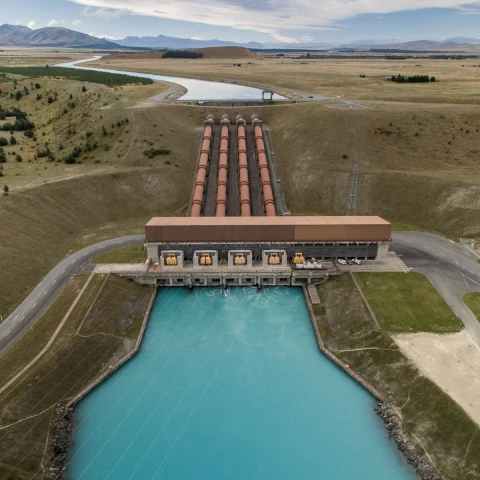
Our seven hydro power stations generate enough renewable electricity to power around 1.4 million homes.
Our hydro stations can be found in some of the most scenic places in New Zealand, making them popular spots to visit. We own and operate six power stations in the Waitaki hydro scheme, as well as the country’s largest hydro station – Manapōuri.
The Waitaki hydro scheme is a series of interconnected lakes and canals. It accounts for 16% of New Zealand’s electricity supply and more than 56% of the average hydro-electricity storage. This storage will become increasingly important for ensuring there’s enough power when it’s required as more wind and solar are introduced into the electricity system, as these rely on wind or sun being available to generate electricity.
The Waitaki hydro scheme consists of eight power stations. Meridian owns and operates six of them: Aviemore, Benmore, Waitaki and Ōhau A, B and C. The other two (Tekapo A and B) are owned and operated by Genesis Energy.
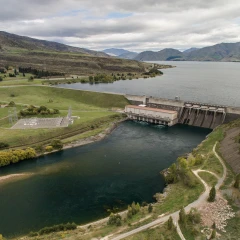
The Aviemore generators are dimensionally the largest in New Zealand. The rotors are nearly eight meters in diameter and weigh 210 tonnes.
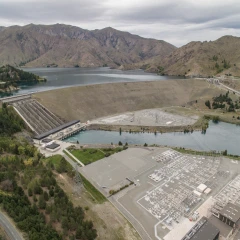
Benmore is the country’s second-largest hydro station after Manapōuri. It generates enough electricity for about 298,000 average New Zealand homes.
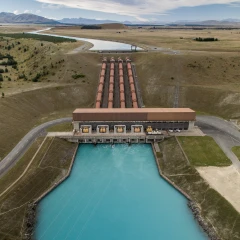
Ōhau A generates enough electricity for about 144,000 average New Zealand homes.
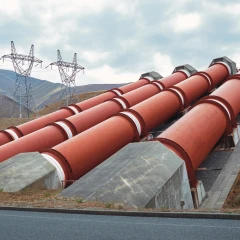
Ōhau B has four 53-megawatt generating units and a generation output of up to 212 megawatts.
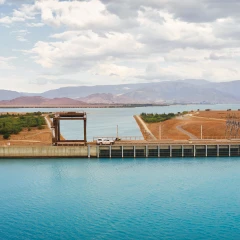
Ōhau C is a twin station with Ōhau B. Its commissioning in 1985 completed the Waitaki power scheme.
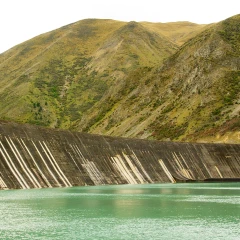
An art deco gem, Waitaki generates enough electricity for about 51,000 average New Zealand homes.
Manapōuri is the largest hydro power station in New Zealand. It’s located on the edge of Lake Manapōuri’s West Arm in Fiordland National Park, which has UNESCO World Heritage status as part of Te Wāhipounamu.
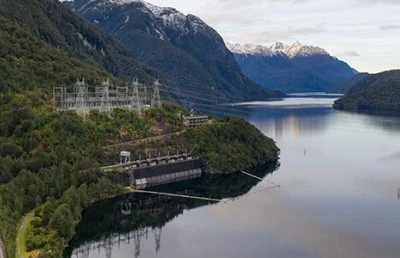
A dam holds water in a big lake. When we need electricity, we let the water flow down through a special pipe (a penstock) to a turbine. These look like large wheels with wide spokes. The force of the water makes the turbine spin, and its rotation drives a generator that turns that spinning motion into electricity.
Most of Meridian’s electricity is made from the energy of falling water. Our hydro stations generate enough electricity to power around 1.4 million homes.
It’s not possible to store large amounts of electricity, but it is possible to store water in dams.
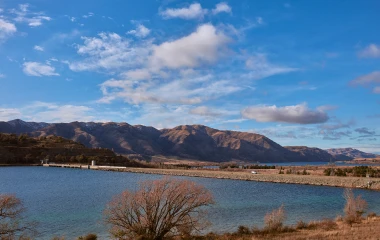
Here you can access information on the dimensions of each of the lakes we use to generate energy (Aviemore, Benmore, Manapōuri, Ōhau, Pūkaki, Te Anau and Waitaki), as well as recent lake-level, snow storage and river-flow data.
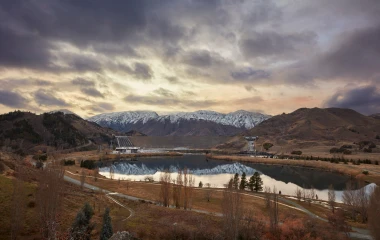
We manage about 50% of New Zealand’s total hydro storage. We collect information on lake levels as well as the amount of water stored as snow, so we can estimate their impact on inflows.
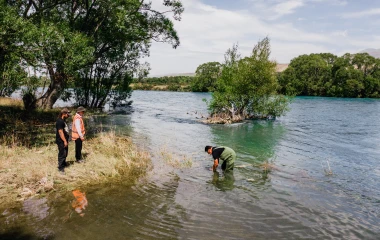
We work closely with iwi and a range of stakeholders to balance the different economic, social, cultural and environmental implications of water use in New Zealand.
Our hydro power schemes operate under strict resource consent conditions. You can read the independent compliance reports below.
Waitaki Hydrometric Compliance Report
Manapōuri Hydrometric Compliance Report
At times Meridian must release water from our stations as part of our resource consent agreements. We update the signage nearby to let people know when we’re going to do this and also publish announcements on our Facebook page.
If you’re camping or fishing in a dry river bed, you must follow all instructions. If you see water appear, the most important thing to do is get out of the water and stay out.
If you want more information on planned flow releases, head to the Environment Canterbury river flow data website.
We’re privileged to be a kaitiaki of the local waters we use to generate electricity. It’s important to us that we take care of them, as well as the species that live in them.
We’re constantly monitoring the impacts of our hydro stations and water management, and working with iwi and the wider communities on initiatives to lessen these impacts. Generally, the impacts relate to the effects on water-based species of inundation, dry river beds and habitat loss.
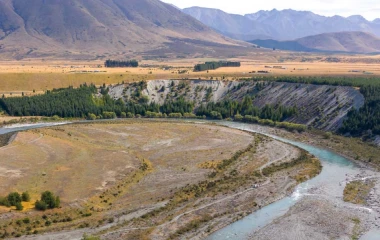
We have a long-term partnership with the Department of Conservation, which runs Project River Recovery, helping preserve flora and fauna in the Upper Waitaki Basin’s braided rover habitats. Meridian has been involved in and has funded this programme since 1991.
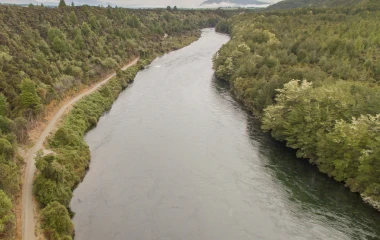
The Waiau River restoration work is a partnership between Meridian and the Waiau Fisheries and Wildlife Habitat Enhancement Trust. The Trust manages a number of habitat-enhancement projects that improve the ecological health of the Waiau River.
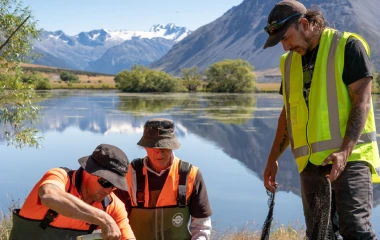
The Waiau and Waitaki catchments are the natural habitats of thousands of native tuna (eels), but the building and operating of dams in these areas have affected their migratory habits. Meridian and Ngāi Tahu operate an annual programme to move thousands of tuna by trapping and transferring the elver (young tuna) upstream from our dams and moving the tuna heke (migrant adult eels) back downstream to spawn.
From time to time we need to remove generation assets from service to enable their proper management, maintenance and upgrades in accordance with prudent asset-management practice.
| Year | Station | MW Impact | Duration | Notes |
|---|---|---|---|---|
| FY2026 | OHA | 66 | 13 Weeks* | Rotor rim re-shrink & Bypass Valve works |
| OHC | 53 | 10 Weeks* | Rotor off alignment correction | |
| OHB | 54 | 3 Weeks* | Combined bearing cooling water pipework replacement | |
| BEN | 95 | 15 Weeks* | Headgate controls upgrade, bushings replacements and U6 gate refurbishment | |
| BEN | 95 | 11 Weeks* | Penstock seismic strengthening | |
| MAN | 128 | 33 Weeks* | Mechanical refurbishment, automation upgrade and install new step up transformer | |
| FY2027 | BEN | 95 | 34 Weeks | Penstock seismic strengthening |
| MAN | 128 | 43 Weeks | Mechanical refurbishment, automation upgrade and install new step up transformer | |
| OHB | 53 | 11 Weeks | Excitation & protection upgrade | |
| OHC | 54 | 11 Weeks | Excitation & protection upgrade | |
| OHA | 66 | 8 Weeks | 220kV CB replacements | |
| OHB | 54 | 8 Weeks | 220kV CB replacements | |
| WTK | 15 | 26 Weeks | Headgate works | |
| WTK | 30 | 26 Weeks | Headgate works | |
| FY2028 | BEN | 95 | 23 Weeks | Penstock seismic strengthening |
| MAN | 128 | 52 Weeks | Mechanical refurbishment and automation upgrade | |
| OHB | 53 | 33 Weeks | Excitation & protection upgrade | |
| OHC | 54 | 33 Weeks | Excitation & protection upgrade | |
| WTK | 30 | 26 Weeks | Headgate works | |
| FY2029 | WTK | 30 | 40 Weeks | Turbine & generator upgrade |
| WTK | 15 | 12 Weeks | Turbine & generator upgrade | |
| MAN | 850 | 3 days | Station outage | |
| MAN | 128 | 41 Weeks | Mechanical refurbishment and automation upgrade | |
| FY2030 | MAN | 128 | 26 Weeks | Automation upgrade |
| FY2031 | MAN | 128 | 26 Weeks | Automation upgrade |
*Remaining weeks of outage in FY26 as at 01 November 2025
Hydro energy generation is only part of what we do. Find out more about our solar progects, wind farms and future projects.
Tackling Zero is Meridian’s quarterly newsletter for people whose roles or studies are focused on sustainability, or for whom this is an area of interest. Each issue will offer Meridian’s insights into a topical sustainability issue, as well as stories on how we, our customers and supply chain partners are tackling sustainability. It also includes links to recent Meridian disclosures such as new policies and reports.